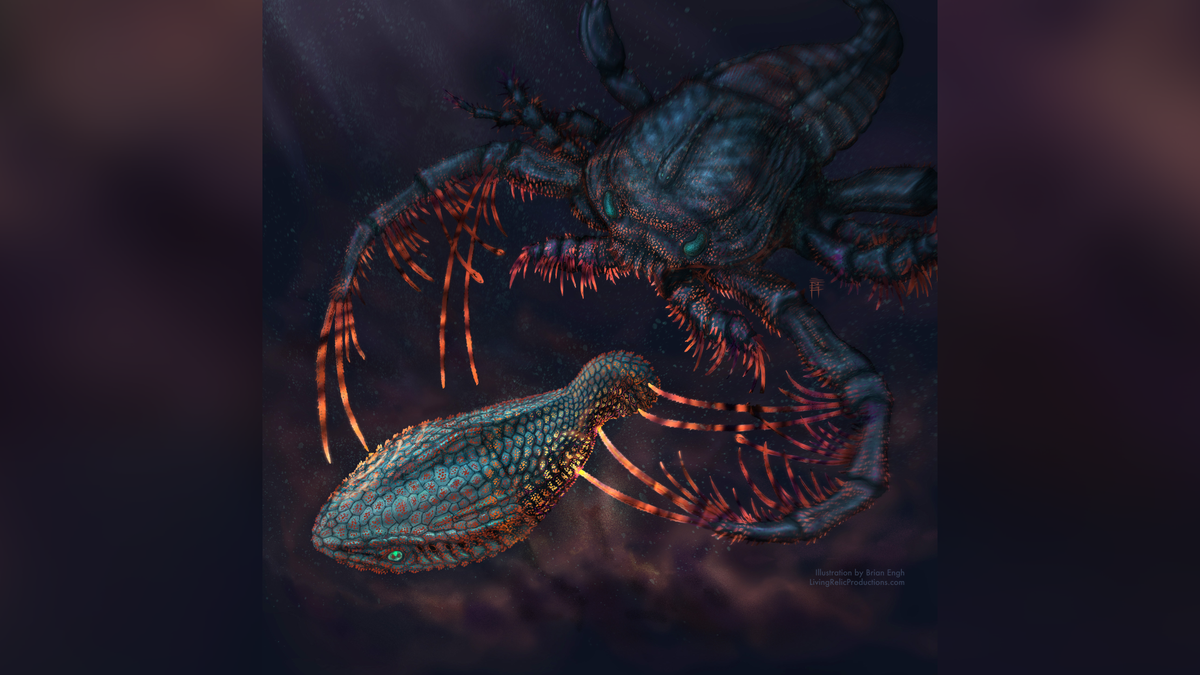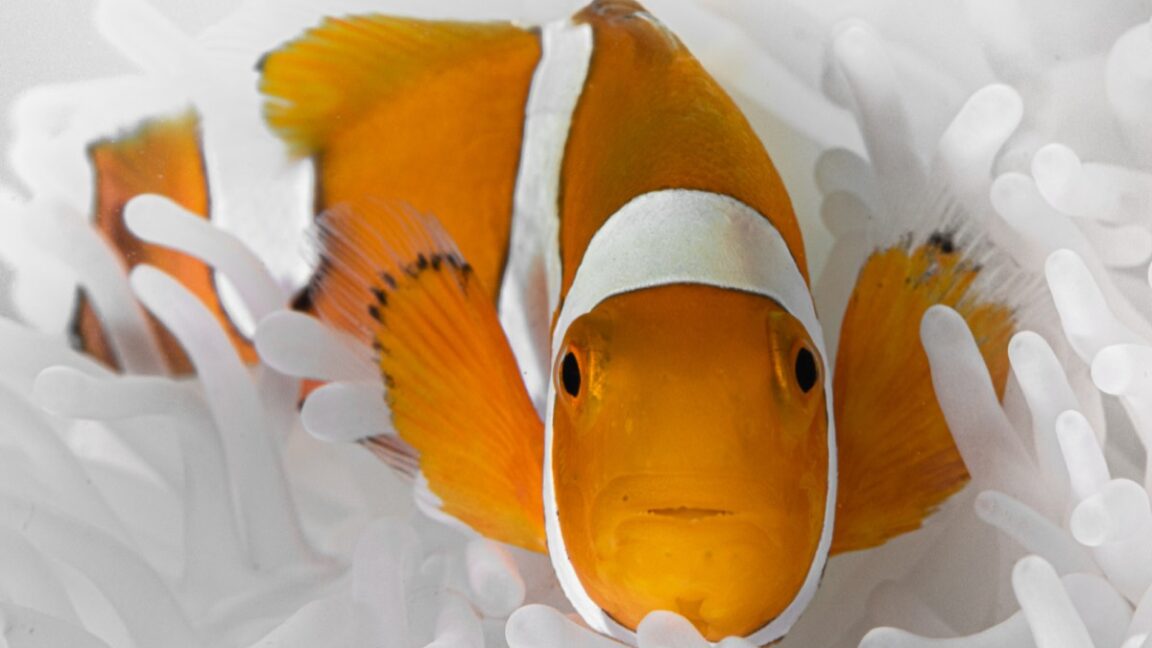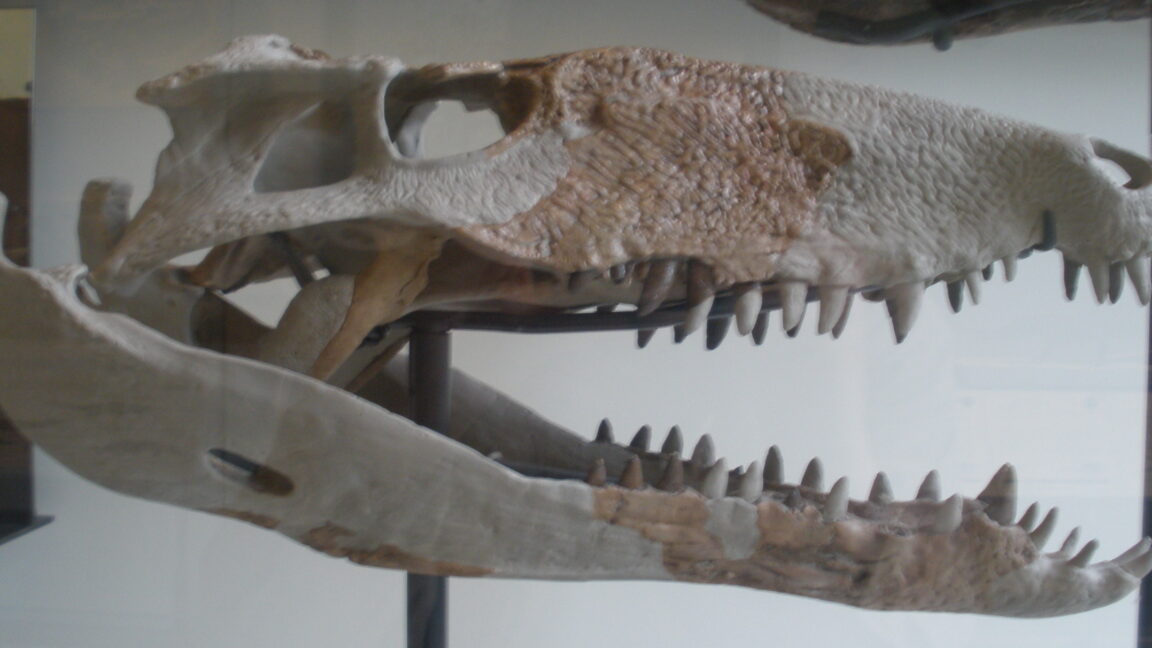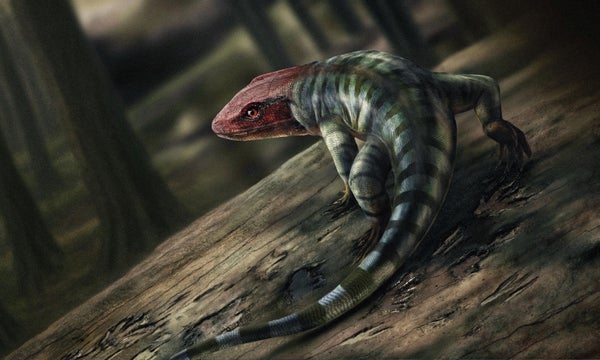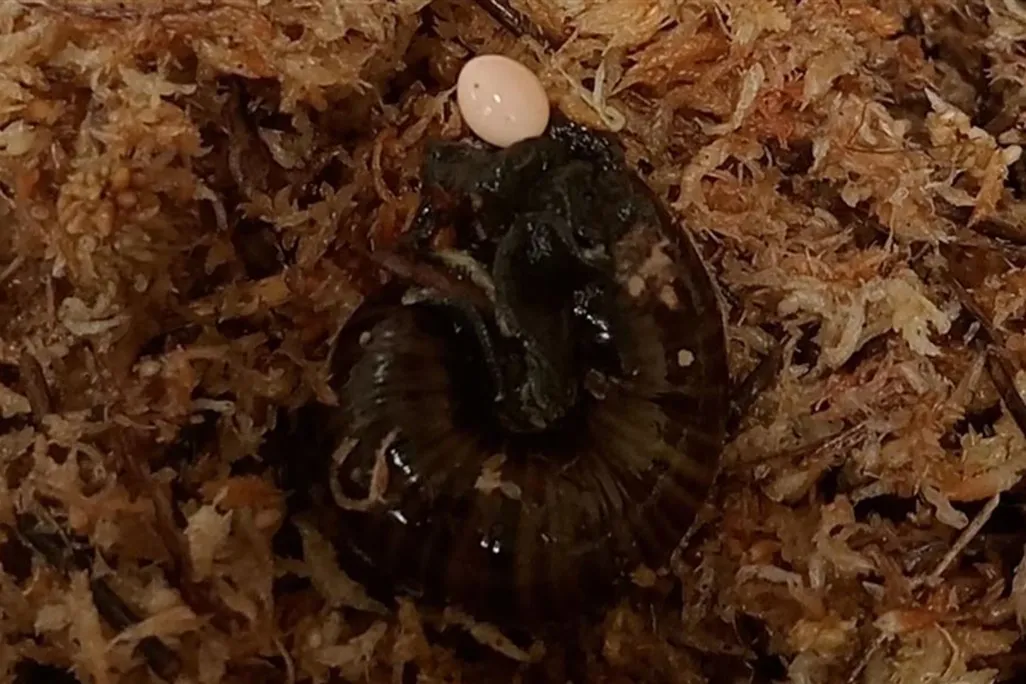Humans are on pace to slaughter 6 trillion animals per year by 2033
Should you care about the suffering of bugs? For most people, it’s a laughable question. But for those who really, really care about animal welfare, there’s a certain intellectual journey that might lead them to take it seriously. It goes something like this: First, they learn that the vast majority of the 84 billion birds and mammals raised for food are kept on factory farms, where animals are routinely mutilated and intensively confined. They become passionate advocates for these neglected and abused creatures. Then they learn that over 90 percent of those land animals are poultry birds — chickens and turkeys raised for meat, and hens raised for eggs — who are treated worse than pigs and cows, and have even fewer legal protections. They become, more or less, advocates for chickens. But then they might learn that fish and shrimp are farmedon an even greater scale — trillions annually compared to a measly 76 billion chickens. If their compassion for animals extends equally to marine life, they might come to advocate primarily for these sea creatures. Go even further, and they’ll discover the emerging industry of insect farming, which works much like chicken, pig, or fish factory farming, with the aim of producing as many animals as possible as cheaply as possible. On these insect factory farms, vast numbers of bugs are confined in trays or other containers until, at several weeks old, they’re frozen, cooked, shredded, or suffocated alive. Most are then sold as feed for farmed fish, poultry, and pigs, as food for pets, or to a lesser degree, direct human consumption. For the animal advocates who take this journey and wind up at the bottom of this animal suffering rabbit hole, a new report from the research organization Rethink Priorities will be pure nightmare fuel. According to the group, humanity is on track to farm and kill nearly 6 trillion animals annually by 2033, a near-quadrupling from 2023. And almost all of the growth in animal farming will come from tiny animals: shrimp, fish, and most of all, two insect species. While humans farm and slaughter an astonishing 3 billion pigs, sheep, goats, and cattle each year, these animals are so dwarfed in numbers by farmed chicken, fish, and bugs that Rethink Priorities didn’t even include them in its calculation, nor did it include the 1 to 2 trillion wild fish scooped out of the ocean every year. The forecast starkly illustrates how a transformation in global agriculture patterns have ratcheted up animal suffering to mind-boggling proportions. The reason is that we’re increasingly eating really small animals. In the 1990s, chicken overtook beef as America’s meat of choice, and US chicken consumption continues to climb every year. And it takes about 127 chickens to produce the same amount of meat as one cow, because cows are enormous, while chickens weigh only about 6 pounds at slaughter. So, as Americans shifted toward eating animal species that are smaller in size, the total number of animals raised on US factory farms shot up. The same logic applies to an even greater extent to fish and shrimp — you’d have to kill about 28,500 shrimps to get the same amount of meat as you would from one cow. These animals are being farmed and eaten in increasingly massive numbers around the world, with both fish and shrimp typically confined in crowded, disease-ridden ponds or tanks that animal advocates liken to underwater factory farms. The world now eats more fish from these farms than from the ocean. Even worse, small animals, like chickens, fish, insects, and shrimp, tend to be treated worse and have fewer protections than larger animals like pigs and cattle.Concern for the welfare of insects — and even fish and shrimp — might bemuse or even offend many people. Humans already kill untold numbers of bugs annually by simply going about our daily business — driving, walking, exterminating ant infestations from our homes, and spraying pesticides on our crops. Americans eat tens of billions of individual shrimps each year with virtually no worry that they might feel pain. While farmed chickens and pigs have received the sympathetic Hollywood treatment, like the Chicken Run movies, Charlotte’s Web, and Okja, similar films about shrimp or mealworms don’t seem to be in the offing. But Rethink Priorities, along with a growing chorus of scientists and philosophers, believe that invertebrates like shrimp and insects could be sentient, meaning they possess the capacity for pain, pleasure, and other sensations. They’re not arguing that these animals are equivalent to a chicken, cow, or human, but that they may be worth some moral consideration given emerging research on their potential for sentience and the massive scale on which they’re farmed.History has long shown us that today’s laughable moral concern could be tomorrow’s tragedy. That could be the case for these tiny, unfamiliar, uncharismatic animals the more we come to understand who they are and what they might be capable of feeling. What can a shrimp or an insect feel?There had long been relatively little research into whether invertebrates like shrimp and insects are sentient, but that’s begun to change in recent years.“Evidence is building that there’s a form of sentience there in insects,” Jonathan Birch, a philosopher at the London School of Economics who leads the Foundations of Animal Sentience project at the university, told me. Historically, this line of inquiry has focused on bees, he said, who have demonstrated signs of sentience by engaging in wound-tending behavior, complex decision-making in weighing pain versus pleasure, and even play. Some research has shown that fruit flies may have the capacity to feel pain and enjoy play.According to Birch and several of his colleagues, adult flies and mosquitoes, along with cockroaches and termites, satisfy six of eight key criteria for sentience, while several other orders satisfy three to four. He’s now collaborating with researchers to study pain indicators in black soldier fly larvae and crickets.What little research has looked at shrimp sentience has found mixed results, and much of it has been conducted on Caridean shrimp, not penaeid shrimp, the group that’s most commonly farmed.Fish thrash inside a tightening net on a fish farm. Havva Zorlu/We AnimalsSome research has shown that shrimp have nociceptors, sensory neurons that detect and respond to potentially harmful stimuli — an important indicator of sentience — but their efforts to avoid threats could be merely reflexive. In one study, shrimp engaged in wound-tending behavior when researchers poured acid onto their antennae, but when they treated it with an anesthetic, the shrimp increased that behavior. This suggests they may not feel pain the way other animals do because the pain relief should have caused them to reduce wound tending.But Birch believes there is strong evidence of sentience in another crustacean species: the crab.Despite our limited understanding of invertebrates’ capacity for pain, our understanding of other animals’ capacities can quickly evolve. Just a couple of decades ago, it was largely thought that fishcouldn’t feel pain, but scientific consensus has significantly shifted toward the belief that they can — and that they could experience many other physical and mental states. Given everything humans have learned about animals’ capacities in recent decades, there’s a strong argument to be made in favor of assuming that other animals are sentient unless proved otherwise, rather than assuming that they aren’t as the starting point.And if shrimp and insects are sentient, it would exacerbate an already emergency situation for global animal welfare, raising the number of farmed sentient animals by well over a trillion creatures today, and potentially many trillions in the decade ahead. The proposition to include these animals in humanity’s moral circle can lead some, Birch said, to throw up their hands in exasperation. “We lack ethical frameworks that tell us how to think about them, but to me, that’s not an excuse for ignoring the issue,” Birch said. “I think people sometimes imagine, well, if the sentient world is so vast — if all ways of feeding ourselves cause harm — then there can’t be any ethical constraints. And I think that’s entirely wrong. I think we do need to take the harm seriously, and think about what we might do to conduct ourselves more ethically.”A question of strategyMost people who advocate for factory-farmed animals focus on pigs, cows, chickens, and turkeys. Only the most quantitatively minded number-crunchers, like Birch and the folks at Rethink Priorities, look at the data and focus on fish, shrimp, and insects.Some in the animal advocacy movement might consider this expansion of moral concern — especially for insects — a major strategic error, one that will make an already fringe movement seem even more strange and scolding. It’s something, if I’m being honest, I’ve felt myself. A worker disinfects crickets’ watering trays in the final grow room at Entomo Farms in Ontario, Canada. James MacDonald/Bloomberg via Getty ImagesBut the general public might be more open to having some ethical consideration for these animals than we might think. Hannah McKay, a research analyst at Rethink Priorities who co-authored the new report, pointed me to recent surveys from the UK and Brazil in which a majority of participants said that they believed that shrimp can feel pain. In the UK and the Netherlands, food companies are phasing out particularly cruel practices in their shrimp supply chains, “even in the absence of high public pressure,” McKay said. Last month, a post about eyestalk ablation — the common, disturbing practice of tearing out female shrimp’s eyes to make them breed faster — made it to the front page of Reddit, whose users were overwhelmingly horrified by it.In 2022, the UK passed the Animal WelfareAct, which included decapod crustaceansamong the animals that should be considered sentient, in large part on the advice of Birch and colleagues.The aim of Rethink Priorities, Birch, and their ilk isn’t necessarily to start a campaign for worldwide shrimp and insect liberation, but rather to, at the very least, secure some minimum welfare standards.Many animal advocates today wish that their predecessors in the 1950s, who were more focused on the welfare of pets, had devoted more attention to cows, pigs, and chickens. Instead, the quiet rise of factory farming in mid-20th-century America went largely unchallenged, and has now led to the confinement, abuse, and slaughter of tens of billions of mammals and birds each year. Sagar Shah, a senior researcher at Rethink Priorities who co-authored the report with McKay, feels the same way about fish and shrimp farming, telling me that if he could turn the clock back 30 years to when these industries were relatively small, he would’ve pushed for “more resources into thinking about these questions: Aresentient? What does good welfare mean for these animals if we’re going to use them?”“Collectively, we missed the boat a bit, and we’ve already got a huge scale of farming for fish and shrimp, and we’re catching up now,” Shah said. “But for insects, the industry is in its infancy, and that means we’ve got an opportunity to figure out what good welfare means and shape the growth of the industry.” It’s a cause that few animal advocates are willing to dedicate themselves to, and it may not win them many allies anytime soon. But that doesn’t deter Shah, who says “that doesn’t mean we shouldn’t try.” You’ve read 1 article in the last monthHere at Vox, we're unwavering in our commitment to covering the issues that matter most to you — threats to democracy, immigration, reproductive rights, the environment, and the rising polarization across this country.Our mission is to provide clear, accessible journalism that empowers you to stay informed and engaged in shaping our world. By becoming a Vox Member, you directly strengthen our ability to deliver in-depth, independent reporting that drives meaningful change.We rely on readers like you — join us.Swati SharmaVox Editor-in-ChiefSee More:
#humans #are #pace #slaughter #trillionHumans are on pace to slaughter 6 trillion animals per year by 2033
Should you care about the suffering of bugs? For most people, it’s a laughable question. But for those who really, really care about animal welfare, there’s a certain intellectual journey that might lead them to take it seriously. It goes something like this: First, they learn that the vast majority of the 84 billion birds and mammals raised for food are kept on factory farms, where animals are routinely mutilated and intensively confined. They become passionate advocates for these neglected and abused creatures. Then they learn that over 90 percent of those land animals are poultry birds — chickens and turkeys raised for meat, and hens raised for eggs — who are treated worse than pigs and cows, and have even fewer legal protections. They become, more or less, advocates for chickens. But then they might learn that fish and shrimp are farmedon an even greater scale — trillions annually compared to a measly 76 billion chickens. If their compassion for animals extends equally to marine life, they might come to advocate primarily for these sea creatures. Go even further, and they’ll discover the emerging industry of insect farming, which works much like chicken, pig, or fish factory farming, with the aim of producing as many animals as possible as cheaply as possible. On these insect factory farms, vast numbers of bugs are confined in trays or other containers until, at several weeks old, they’re frozen, cooked, shredded, or suffocated alive. Most are then sold as feed for farmed fish, poultry, and pigs, as food for pets, or to a lesser degree, direct human consumption. For the animal advocates who take this journey and wind up at the bottom of this animal suffering rabbit hole, a new report from the research organization Rethink Priorities will be pure nightmare fuel. According to the group, humanity is on track to farm and kill nearly 6 trillion animals annually by 2033, a near-quadrupling from 2023. And almost all of the growth in animal farming will come from tiny animals: shrimp, fish, and most of all, two insect species. While humans farm and slaughter an astonishing 3 billion pigs, sheep, goats, and cattle each year, these animals are so dwarfed in numbers by farmed chicken, fish, and bugs that Rethink Priorities didn’t even include them in its calculation, nor did it include the 1 to 2 trillion wild fish scooped out of the ocean every year. The forecast starkly illustrates how a transformation in global agriculture patterns have ratcheted up animal suffering to mind-boggling proportions. The reason is that we’re increasingly eating really small animals. In the 1990s, chicken overtook beef as America’s meat of choice, and US chicken consumption continues to climb every year. And it takes about 127 chickens to produce the same amount of meat as one cow, because cows are enormous, while chickens weigh only about 6 pounds at slaughter. So, as Americans shifted toward eating animal species that are smaller in size, the total number of animals raised on US factory farms shot up. The same logic applies to an even greater extent to fish and shrimp — you’d have to kill about 28,500 shrimps to get the same amount of meat as you would from one cow. These animals are being farmed and eaten in increasingly massive numbers around the world, with both fish and shrimp typically confined in crowded, disease-ridden ponds or tanks that animal advocates liken to underwater factory farms. The world now eats more fish from these farms than from the ocean. Even worse, small animals, like chickens, fish, insects, and shrimp, tend to be treated worse and have fewer protections than larger animals like pigs and cattle.Concern for the welfare of insects — and even fish and shrimp — might bemuse or even offend many people. Humans already kill untold numbers of bugs annually by simply going about our daily business — driving, walking, exterminating ant infestations from our homes, and spraying pesticides on our crops. Americans eat tens of billions of individual shrimps each year with virtually no worry that they might feel pain. While farmed chickens and pigs have received the sympathetic Hollywood treatment, like the Chicken Run movies, Charlotte’s Web, and Okja, similar films about shrimp or mealworms don’t seem to be in the offing. But Rethink Priorities, along with a growing chorus of scientists and philosophers, believe that invertebrates like shrimp and insects could be sentient, meaning they possess the capacity for pain, pleasure, and other sensations. They’re not arguing that these animals are equivalent to a chicken, cow, or human, but that they may be worth some moral consideration given emerging research on their potential for sentience and the massive scale on which they’re farmed.History has long shown us that today’s laughable moral concern could be tomorrow’s tragedy. That could be the case for these tiny, unfamiliar, uncharismatic animals the more we come to understand who they are and what they might be capable of feeling. What can a shrimp or an insect feel?There had long been relatively little research into whether invertebrates like shrimp and insects are sentient, but that’s begun to change in recent years.“Evidence is building that there’s a form of sentience there in insects,” Jonathan Birch, a philosopher at the London School of Economics who leads the Foundations of Animal Sentience project at the university, told me. Historically, this line of inquiry has focused on bees, he said, who have demonstrated signs of sentience by engaging in wound-tending behavior, complex decision-making in weighing pain versus pleasure, and even play. Some research has shown that fruit flies may have the capacity to feel pain and enjoy play.According to Birch and several of his colleagues, adult flies and mosquitoes, along with cockroaches and termites, satisfy six of eight key criteria for sentience, while several other orders satisfy three to four. He’s now collaborating with researchers to study pain indicators in black soldier fly larvae and crickets.What little research has looked at shrimp sentience has found mixed results, and much of it has been conducted on Caridean shrimp, not penaeid shrimp, the group that’s most commonly farmed.Fish thrash inside a tightening net on a fish farm. Havva Zorlu/We AnimalsSome research has shown that shrimp have nociceptors, sensory neurons that detect and respond to potentially harmful stimuli — an important indicator of sentience — but their efforts to avoid threats could be merely reflexive. In one study, shrimp engaged in wound-tending behavior when researchers poured acid onto their antennae, but when they treated it with an anesthetic, the shrimp increased that behavior. This suggests they may not feel pain the way other animals do because the pain relief should have caused them to reduce wound tending.But Birch believes there is strong evidence of sentience in another crustacean species: the crab.Despite our limited understanding of invertebrates’ capacity for pain, our understanding of other animals’ capacities can quickly evolve. Just a couple of decades ago, it was largely thought that fishcouldn’t feel pain, but scientific consensus has significantly shifted toward the belief that they can — and that they could experience many other physical and mental states. Given everything humans have learned about animals’ capacities in recent decades, there’s a strong argument to be made in favor of assuming that other animals are sentient unless proved otherwise, rather than assuming that they aren’t as the starting point.And if shrimp and insects are sentient, it would exacerbate an already emergency situation for global animal welfare, raising the number of farmed sentient animals by well over a trillion creatures today, and potentially many trillions in the decade ahead. The proposition to include these animals in humanity’s moral circle can lead some, Birch said, to throw up their hands in exasperation. “We lack ethical frameworks that tell us how to think about them, but to me, that’s not an excuse for ignoring the issue,” Birch said. “I think people sometimes imagine, well, if the sentient world is so vast — if all ways of feeding ourselves cause harm — then there can’t be any ethical constraints. And I think that’s entirely wrong. I think we do need to take the harm seriously, and think about what we might do to conduct ourselves more ethically.”A question of strategyMost people who advocate for factory-farmed animals focus on pigs, cows, chickens, and turkeys. Only the most quantitatively minded number-crunchers, like Birch and the folks at Rethink Priorities, look at the data and focus on fish, shrimp, and insects.Some in the animal advocacy movement might consider this expansion of moral concern — especially for insects — a major strategic error, one that will make an already fringe movement seem even more strange and scolding. It’s something, if I’m being honest, I’ve felt myself. A worker disinfects crickets’ watering trays in the final grow room at Entomo Farms in Ontario, Canada. James MacDonald/Bloomberg via Getty ImagesBut the general public might be more open to having some ethical consideration for these animals than we might think. Hannah McKay, a research analyst at Rethink Priorities who co-authored the new report, pointed me to recent surveys from the UK and Brazil in which a majority of participants said that they believed that shrimp can feel pain. In the UK and the Netherlands, food companies are phasing out particularly cruel practices in their shrimp supply chains, “even in the absence of high public pressure,” McKay said. Last month, a post about eyestalk ablation — the common, disturbing practice of tearing out female shrimp’s eyes to make them breed faster — made it to the front page of Reddit, whose users were overwhelmingly horrified by it.In 2022, the UK passed the Animal WelfareAct, which included decapod crustaceansamong the animals that should be considered sentient, in large part on the advice of Birch and colleagues.The aim of Rethink Priorities, Birch, and their ilk isn’t necessarily to start a campaign for worldwide shrimp and insect liberation, but rather to, at the very least, secure some minimum welfare standards.Many animal advocates today wish that their predecessors in the 1950s, who were more focused on the welfare of pets, had devoted more attention to cows, pigs, and chickens. Instead, the quiet rise of factory farming in mid-20th-century America went largely unchallenged, and has now led to the confinement, abuse, and slaughter of tens of billions of mammals and birds each year. Sagar Shah, a senior researcher at Rethink Priorities who co-authored the report with McKay, feels the same way about fish and shrimp farming, telling me that if he could turn the clock back 30 years to when these industries were relatively small, he would’ve pushed for “more resources into thinking about these questions: Aresentient? What does good welfare mean for these animals if we’re going to use them?”“Collectively, we missed the boat a bit, and we’ve already got a huge scale of farming for fish and shrimp, and we’re catching up now,” Shah said. “But for insects, the industry is in its infancy, and that means we’ve got an opportunity to figure out what good welfare means and shape the growth of the industry.” It’s a cause that few animal advocates are willing to dedicate themselves to, and it may not win them many allies anytime soon. But that doesn’t deter Shah, who says “that doesn’t mean we shouldn’t try.” You’ve read 1 article in the last monthHere at Vox, we're unwavering in our commitment to covering the issues that matter most to you — threats to democracy, immigration, reproductive rights, the environment, and the rising polarization across this country.Our mission is to provide clear, accessible journalism that empowers you to stay informed and engaged in shaping our world. By becoming a Vox Member, you directly strengthen our ability to deliver in-depth, independent reporting that drives meaningful change.We rely on readers like you — join us.Swati SharmaVox Editor-in-ChiefSee More:
#humans #are #pace #slaughter #trillion




